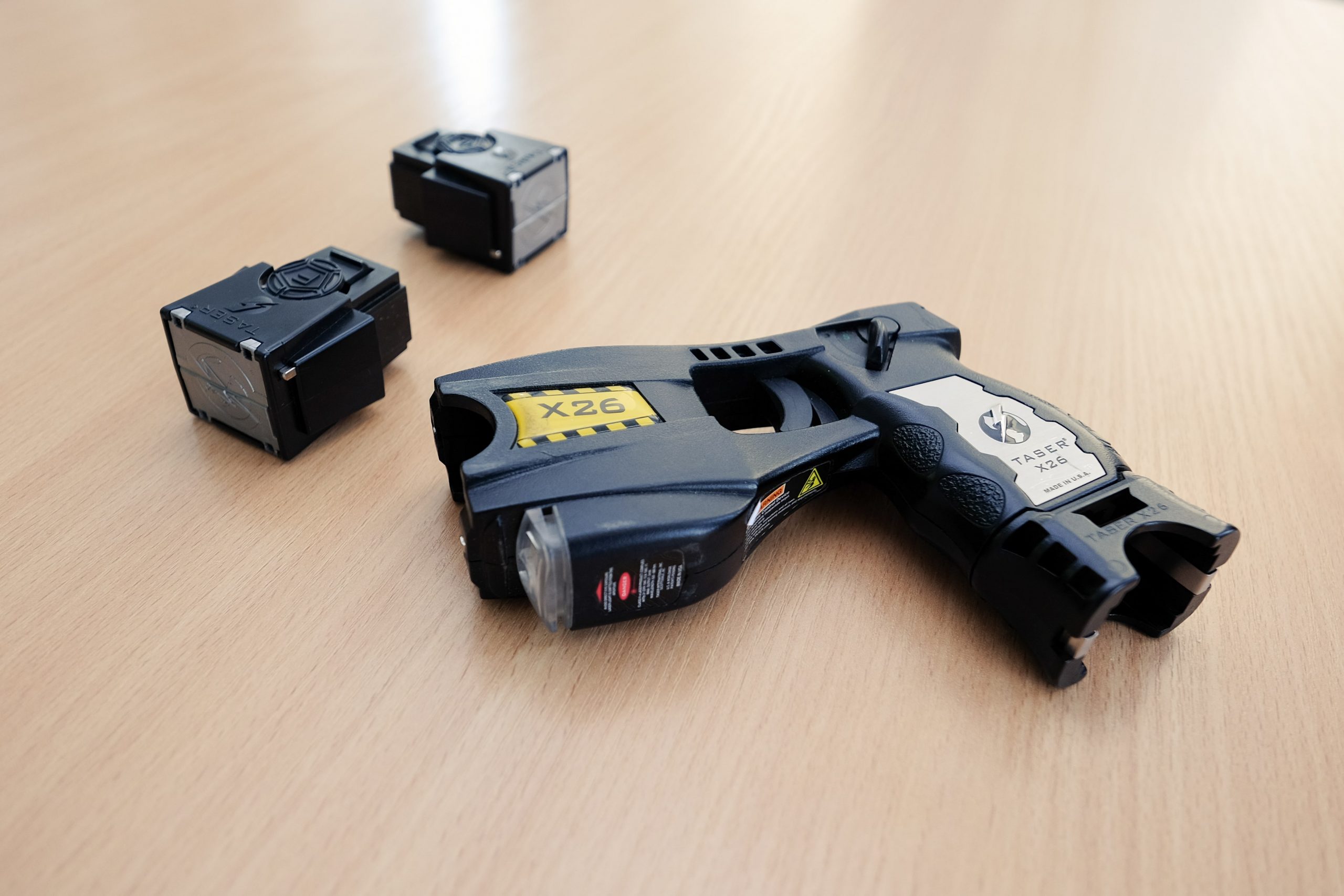Share This Article
ArrayA 95-year-old woman has been left with critical injuries after being tasered by police, following an incident at an aged care home in Cooma.
Great grandmother Clare Nowland, who has dementia, was found by staff holding a steak knife.
Police allege that she remained armed with the knife upon their arrival at the facility and approached them with it.
Reportedly, Nowland, who is 5’2” and weighs 43kg, was in a medical treatment room by herself at the time, travelling towards officers at a ‘slow pace’ on her walking frame.
Police have stated that they attempted to de-escalate the situation, asking her to drop the knife.
She was tased twice, once in front of her chest, and once in the back.
NSW Assistant Police Commissioner, Peter Cotter said: “at the time she was Tasered she was approaching police, it is fair to say at a slow pace… She had a walking frame. But she had a knife.”
Following the discharge of the taser, Nowland fell back and smashed her head, which has left her with a suspected fractured skull and ‘brain bleed’.
Her condition continues to worsen, with it reported that she is now receiving end-of-life care in Cooma District Hospital.
A critical incident team, comprised of homicide squad investigators, will now investigate the incident.
This investigation will be reviewed by the Professional Standards Command, with this also monitored by the Law Enforcement Conduct Commission.
Police have noted that the senior constable with 12-years’ experience who discharged the taser has been taken off duty, with his position currently under review.
The incident was captured on the officer’s body worn camera; however, Cotter has advised the media that it will not be released to the public.
“It forms a significant and integral part of the investigation, and it is not in the public interest to be releasing that.” he said.
Advocates and the community alike have been outraged by the incident, calling for greater accountability and training to ensure police are equipped to deal with such situations.
Greens senator David Shoebridge said: “tasers are a potentially deadly weapon and need to be treated as such, but when the system sends in police that’s too often what they reach for.
“The structural failing here is dispatching police to the incident when an emergency mental health team should have been available to de-escalate and treat an older woman in distress.”
A taser is a device which delivers a strong electric current capable of causing involuntary muscle contractions.
Two small electrodes are propelled by compressed nitrogen charges into the individual, which remain connected to the main unit via wires.
In NSW, tasers are classified as a prohibited weapon under Schedule 1 of the Weapons Prohibition Act 1998 (NSW).
The schedule provides that a ‘a taser gun or other similar anti-personnel conducted energy device’ and ‘a cartridge or similar device that is designed to propel probes or prongs from a weapon referred to’ are prohibited weapons.
It is an offence to possess or use a prohibited weapon, unless authorised to do so by a permit as per section 7(1).
A maximum penalty of 14 years imprisonment is applicable.
However, where dealt with in the Local Court, the maximum penalty applicable is instead limited to an $11,000 fine and/or 2 years imprisonment.
It is a ‘table 2’ offence which means that it will be dealt with in the Local Court unless the prosecution elects to take it to the District Court.
Notably, permits for such weapons will usually only be issued for police or other government purposes.
When Can Police Use Tasers?
In their procedures, the NSW Police detail that the Commissioner of Police has approved the use of tasers by officers who have been trained and certified to use such devices.
This includes General Duties officers and officers from the Police Transport Command, as well as specialist units such as the Public Order and Riot Squad or Tactical Operations Unit.
Notably, as a discharge of a taser is classified as a use of force by police, it must be justified under Part 18 of the Law Enforcement (Powers and Responsibilities) Act 2002 (NSW).
Officers may use such force as is ‘reasonably necessary’ to make the arrest or to prevent the escape of the person after arrest, when exercising the power of arrest, as per section 231.
Section 230 more generally provides that it is lawful for a police officer exercising a lawful function to use such force as is reasonably necessary to exercise the relevant function.
Under NSW Police’s Tactical Options Model, the use of a taser is a tactical option which is designed to incapacitate a suspect.
Published police guidelines provide that tasers may be discharged at the discretion of officers (after a proper assessment of the relevant situation and environment) in order to:
- Protect human life,
- Protect yourself or others where violent confrontation or violent resistance is occurring or imminent,
- Protect an officer/s in danger of being overpowered or to protect themselves or another person from the risk of actual bodily harm,
- Protection from animals.
Notably, the guidelines also provide that a taser should not be used, unless exceptional circumstances exist, in situations where a subject is:
- handcuffed,
- suspected on reasonable grounds of being pregnant,
- elderly or disabled,
- a child or of particularly small body mass,
- operating a vehicle or machinery where there is a danger of it becoming out of control and posing a risk.
It also provides that exceptional circumstances will be required when using a taser against a subject who is fleeing or where the device is used in a prolonged fashion (i.e., by holding the trigger down for a period greater than five seconds).
Exceptional circumstances is defined under the guidelines to refer to circumstances: ‘that would cause a reasonable person to believe that prompt and unusual action is necessary to prevent actual bodily harm to self or others’.
This is dependent upon officer’s assessment of the situation which will include the behaviour of the subject, the environment, and other tactical options available.
Illegal use of a taser by police can subject the officer to the earlier outlined penalties.
Image credit: Karlis Dambrans
Book a Lawyer Online
Make a booking to arrange a free consult today.
Call For Free Consultation
Call Now to Speak To a Criminal Defence Lawyer
Over 40 Years Combined Experience
Proven SuccessAustralia-Wide
Experienced LawyerGuarantee
 (02) 8606 2218
(02) 8606 2218
 (02) 8606 2218
(02) 8606 2218












